21JAN 2012
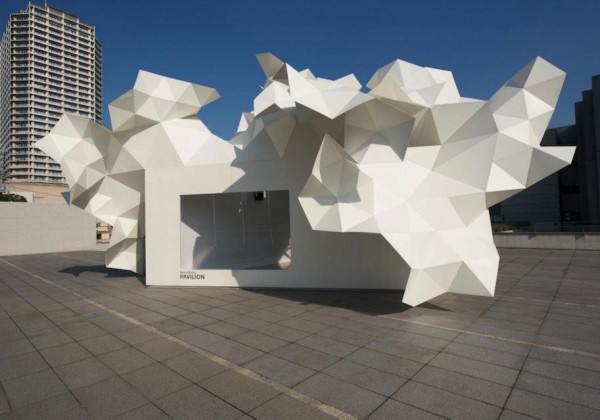 © Museum of Contemporary Art Tokyo
Hirata said that he tried to create a pavilion that resembled a tree, using the same logic. For the Japanese architect, trees are highly symbolic forms because they create shade and can offer ideal shelter and resting places for all of mankind, a function that repeats itself in every corner of the planet. "I wondered what would happen if the walls were to keep growing upwards and present an uneven surface like 'pleats'.
© Museum of Contemporary Art Tokyo
Hirata said that he tried to create a pavilion that resembled a tree, using the same logic. For the Japanese architect, trees are highly symbolic forms because they create shade and can offer ideal shelter and resting places for all of mankind, a function that repeats itself in every corner of the planet. "I wondered what would happen if the walls were to keep growing upwards and present an uneven surface like 'pleats'.
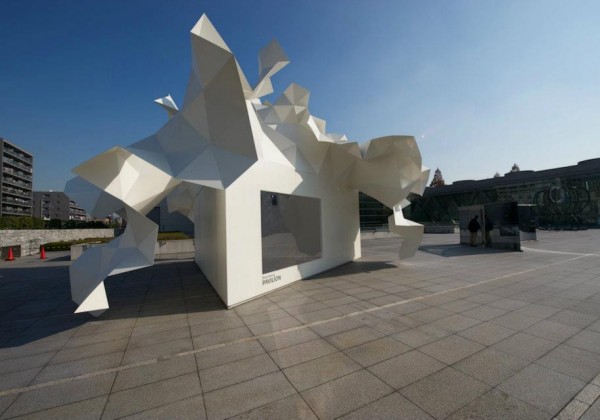 © Museum of Contemporary Art Tokyo Pleats resemble a tree in the way that they spread out and capture the sun and I felt that they would produce a bright, impressive exterior.
I also thought that the space beneath this surface would present a relaxed atmosphere, similar to that of tree shade that would be an ideal quality for an exhibition space Hirata created a pleated metal surface, using a very simple technique which consists entirely of a combination of isosceles triangles. Even if the resulting shape appears complex—with its constant negative curvature—it is, in reality, a basic structure for an organic whole with certain visual impact.
© Museum of Contemporary Art Tokyo Pleats resemble a tree in the way that they spread out and capture the sun and I felt that they would produce a bright, impressive exterior.
I also thought that the space beneath this surface would present a relaxed atmosphere, similar to that of tree shade that would be an ideal quality for an exhibition space Hirata created a pleated metal surface, using a very simple technique which consists entirely of a combination of isosceles triangles. Even if the resulting shape appears complex—with its constant negative curvature—it is, in reality, a basic structure for an organic whole with certain visual impact.
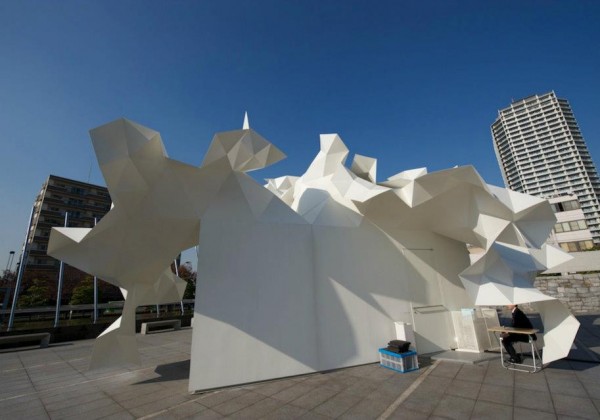 © Museum of Contemporary Art Tokyo The pavilion, white and abstract, might recall the forms of cirrus and cumulus clouds or even a crumpled origami, but it is inspired by the way the forms of branches work to create efficient photosynthesis. This is probably the most mature example in Akihisa Hirata's recent work.
In fact, in looking at the design evolution of the young Japanese architect, it is clear that Hirata has developed a unique style that finds it origins in his seven-year apprenticeship in Toyo Ito's office.
© Museum of Contemporary Art Tokyo The pavilion, white and abstract, might recall the forms of cirrus and cumulus clouds or even a crumpled origami, but it is inspired by the way the forms of branches work to create efficient photosynthesis. This is probably the most mature example in Akihisa Hirata's recent work.
In fact, in looking at the design evolution of the young Japanese architect, it is clear that Hirata has developed a unique style that finds it origins in his seven-year apprenticeship in Toyo Ito's office.
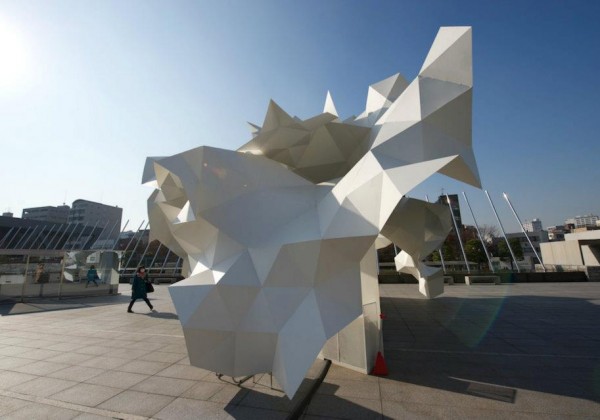 © Museum of Contemporary Art Tokyo He learned from his teacher how to unite mathematics and nature. This results in the fact that he does not consider geometric studies based on algorithms and natural forms to be contradictory.
© Museum of Contemporary Art Tokyo He learned from his teacher how to unite mathematics and nature. This results in the fact that he does not consider geometric studies based on algorithms and natural forms to be contradictory.
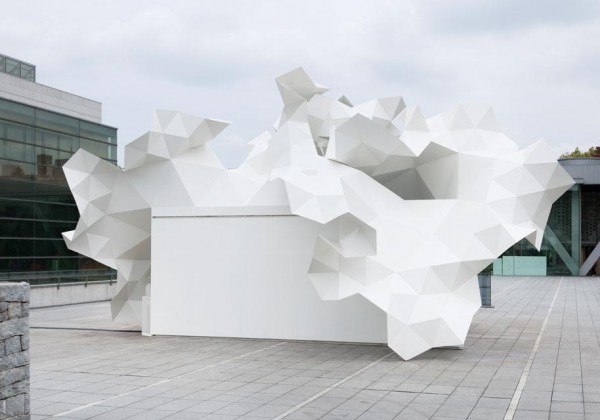 © Museum of Contemporary Art Tokyo It should be noted that Toyo Ito was one of the first to insist upon the necessity of looking to nature in its organic essence as a product of genetic algorithms that can unravel the secret of the growth of forms.
In his early production, Hirata's architecture was inspired by the binary system and he systematically proposed forms developed through repetition and variation. He subsequently extended his interest to organic forms, reproducing them more or less sculpturally.
© Museum of Contemporary Art Tokyo It should be noted that Toyo Ito was one of the first to insist upon the necessity of looking to nature in its organic essence as a product of genetic algorithms that can unravel the secret of the growth of forms.
In his early production, Hirata's architecture was inspired by the binary system and he systematically proposed forms developed through repetition and variation. He subsequently extended his interest to organic forms, reproducing them more or less sculpturally.
 © Museum of Contemporary Art Tokyo In this pavilion, he shifts the meaning of his work once again, this time towards the production of architectural forms that arise from active processes rather than from direct formal interest. This passage is decisive because it provides for growth and expansion: an open rather than closed formal system of transformation and expression.
The Bloomberg Pavilion Project is part of the strategy that the Museum of Contemporary Art Tokyo has put into place to encourage a more intimate relationship between art and cities.
© Museum of Contemporary Art Tokyo In this pavilion, he shifts the meaning of his work once again, this time towards the production of architectural forms that arise from active processes rather than from direct formal interest. This passage is decisive because it provides for growth and expansion: an open rather than closed formal system of transformation and expression.
The Bloomberg Pavilion Project is part of the strategy that the Museum of Contemporary Art Tokyo has put into place to encourage a more intimate relationship between art and cities.
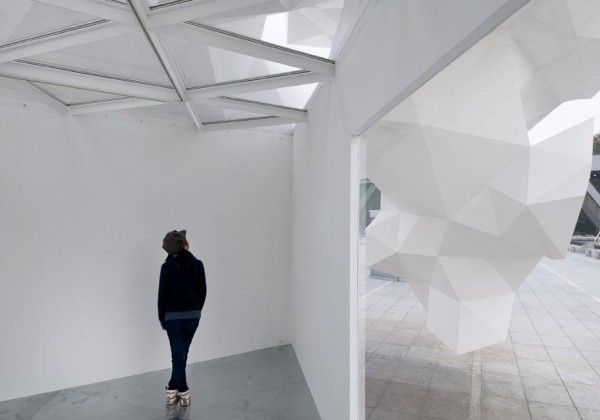 © Museum of Contemporary Art Tokyo The joint project is carried out with the cooperation of Bloomberg, a company that thrives on the information market by influencing decision makers across the world and that has implemented an extensive philanthropic program. It should be noted that the pavilion space, with its full schedule for the next year, will be, in any case, "raffled off" for the summer of 2012 in a competition open to under-30 Tokyo artists. In this project, the architect/experimenter Akihisa Hirata, who is gaining great international attention, asks what simplicity and nature mean in architecture today, posing—to himself and to the artists who will exhibit there in the coming year—a simple but fundamental question which we all might try to ponder.
© Museum of Contemporary Art Tokyo The joint project is carried out with the cooperation of Bloomberg, a company that thrives on the information market by influencing decision makers across the world and that has implemented an extensive philanthropic program. It should be noted that the pavilion space, with its full schedule for the next year, will be, in any case, "raffled off" for the summer of 2012 in a competition open to under-30 Tokyo artists. In this project, the architect/experimenter Akihisa Hirata, who is gaining great international attention, asks what simplicity and nature mean in architecture today, posing—to himself and to the artists who will exhibit there in the coming year—a simple but fundamental question which we all might try to ponder.
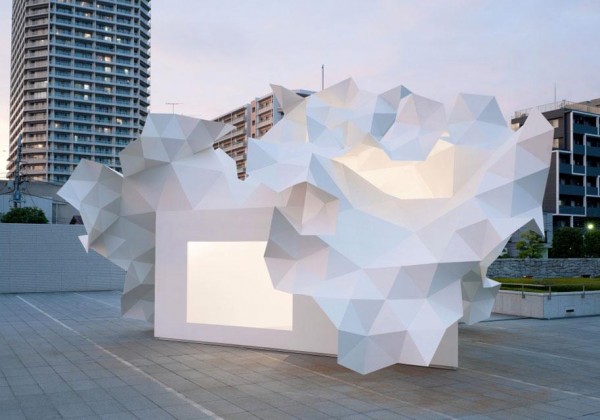 © Museum of Contemporary Art Tokyo.
© Museum of Contemporary Art Tokyo.
 © Museum of Contemporary Art Tokyo
© Museum of Contemporary Art Tokyo
 © Museum of Contemporary Art Tokyo
© Museum of Contemporary Art Tokyo
 © Museum of Contemporary Art Tokyo
© Museum of Contemporary Art Tokyo
 © Museum of Contemporary Art Tokyo
© Museum of Contemporary Art Tokyo
 © Museum of Contemporary Art Tokyo
© Museum of Contemporary Art Tokyo
 © Museum of Contemporary Art Tokyo
© Museum of Contemporary Art Tokyo
 © Museum of Contemporary Art Tokyo
© Museum of Contemporary Art Tokyo
 © Museum of Contemporary Art Tokyo
© Museum of Contemporary Art Tokyo
Bloomberg Pavilion / Akihisa Hirata
Posted in Architecture - Pavilion by * FORMAKERS | Tags: Tokyo
The exuberant Bloomberg Pavilion designed by Akihisa Hirata is located on the museum entry parterre to become its exciting new symbol. Curators plan to use the pavilion not only as an exhibition space but also for events and performances by young artists working in the Japanese capital. © Museum of Contemporary Art Tokyo
© Museum of Contemporary Art Tokyo © Museum of Contemporary Art Tokyo
© Museum of Contemporary Art Tokyo © Museum of Contemporary Art Tokyo
© Museum of Contemporary Art Tokyo © Museum of Contemporary Art Tokyo
© Museum of Contemporary Art Tokyo © Museum of Contemporary Art Tokyo
© Museum of Contemporary Art Tokyo © Museum of Contemporary Art Tokyo
© Museum of Contemporary Art Tokyo © Museum of Contemporary Art Tokyo
© Museum of Contemporary Art Tokyo © Museum of Contemporary Art Tokyo
© Museum of Contemporary Art Tokyo © Museum of Contemporary Art Tokyo
© Museum of Contemporary Art Tokyo
 © Museum of Contemporary Art Tokyo
© Museum of Contemporary Art Tokyo
 © Museum of Contemporary Art Tokyo
© Museum of Contemporary Art Tokyo
 © Museum of Contemporary Art Tokyo
© Museum of Contemporary Art Tokyo
 © Museum of Contemporary Art Tokyo
© Museum of Contemporary Art Tokyo
 © Museum of Contemporary Art Tokyo
© Museum of Contemporary Art Tokyo
 © Museum of Contemporary Art Tokyo
© Museum of Contemporary Art Tokyo
 © Museum of Contemporary Art Tokyo
© Museum of Contemporary Art Tokyo
Comments
No comments
Sign in »



